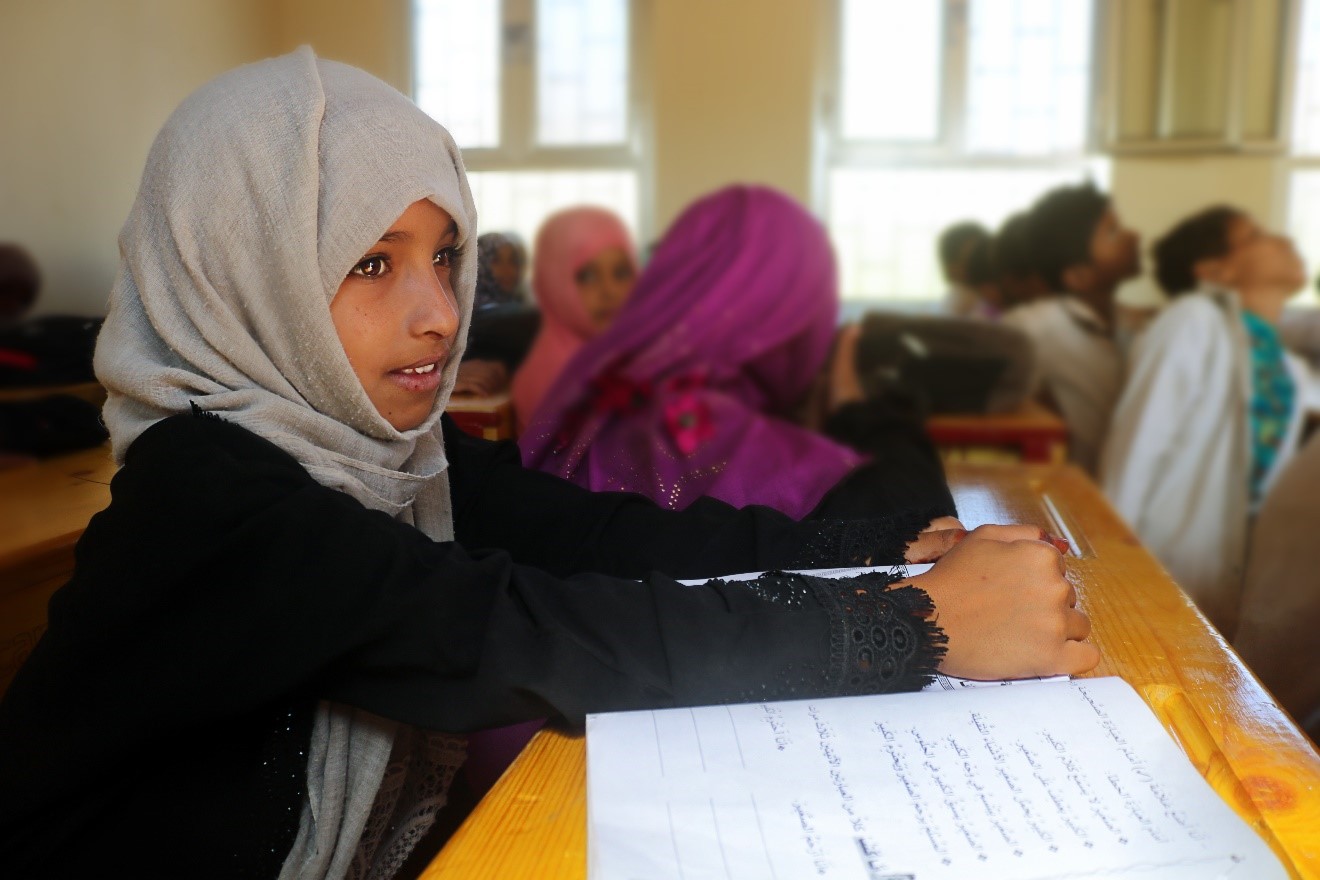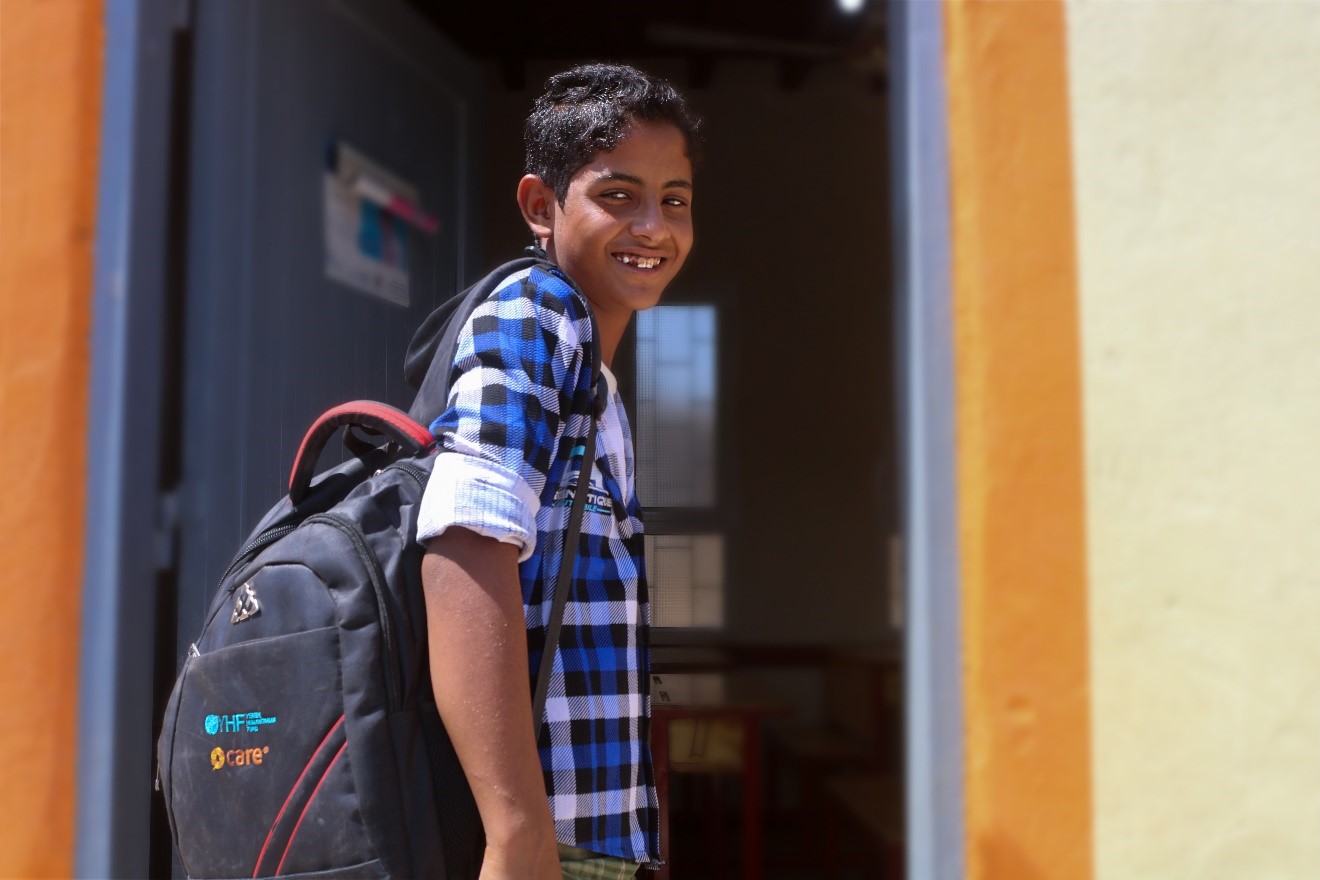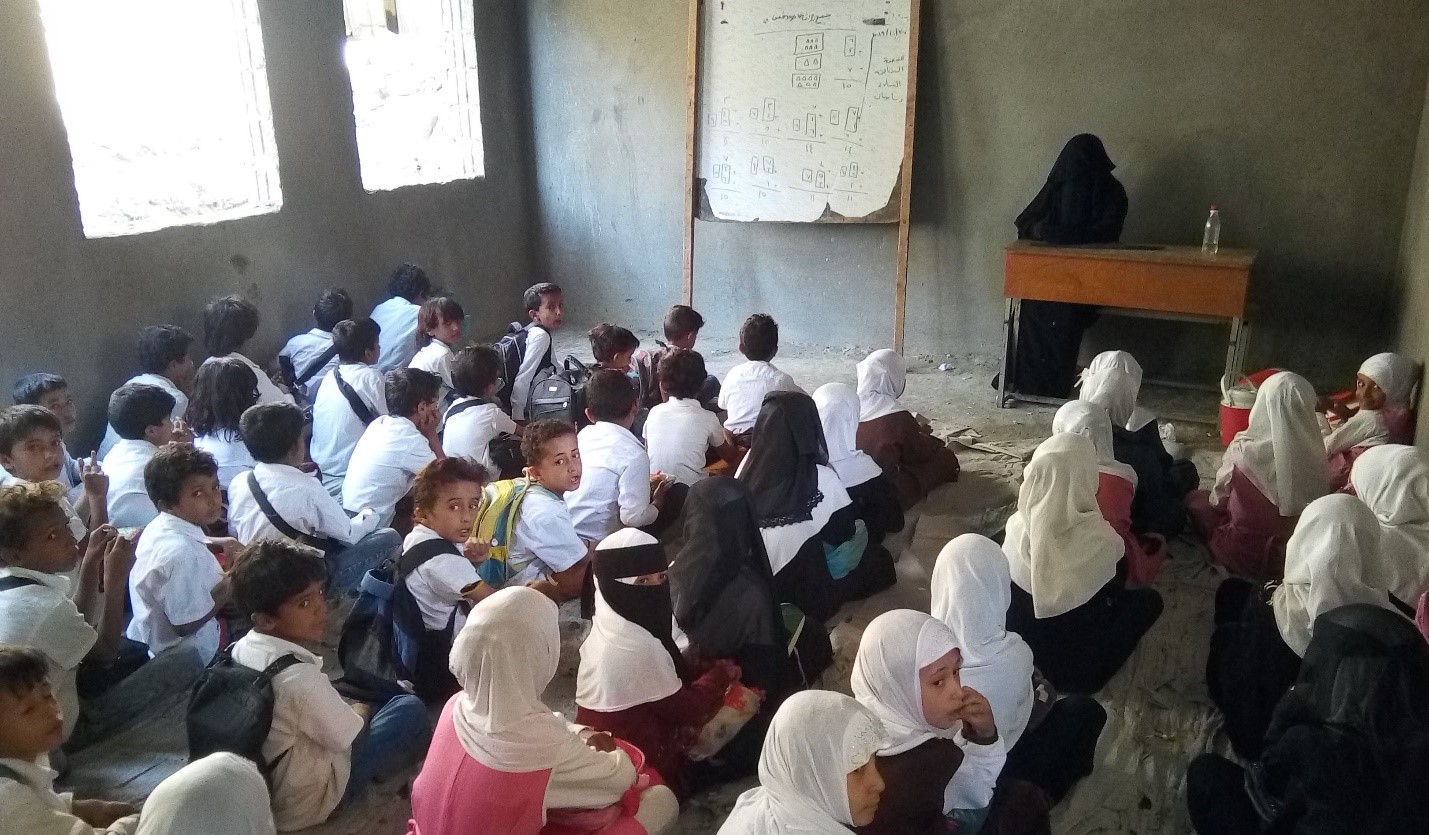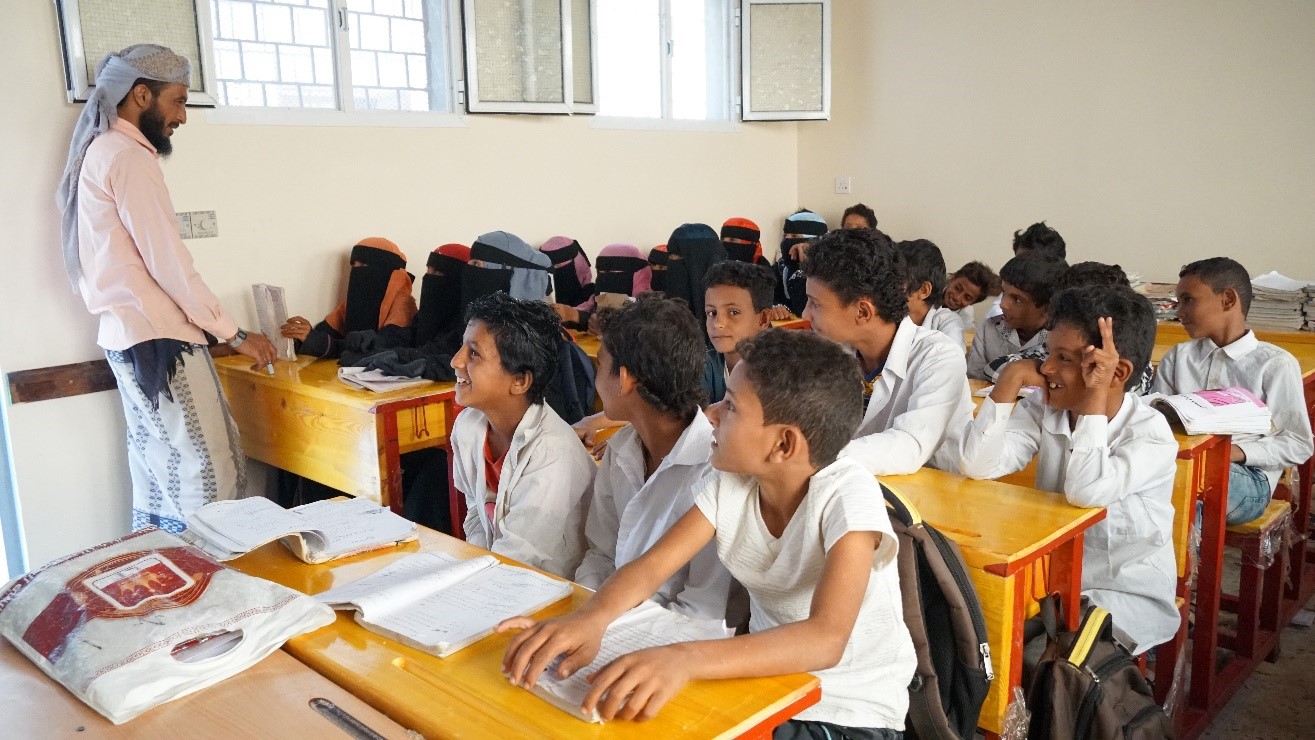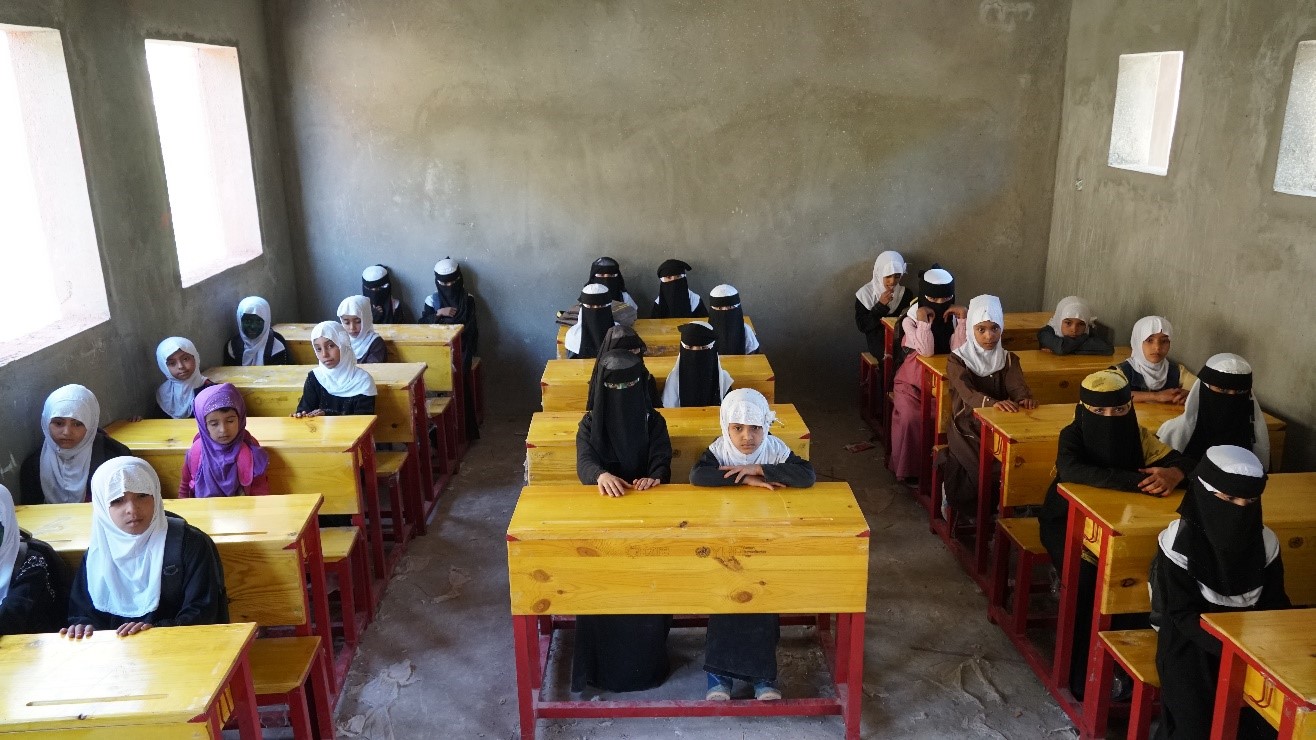The humanitarian crisis in Yemen remains the worst in the world, driven by conflict and economic collapse. The resulting breakdown of public institutions has had a devastating toll on children’s education in Yemen. Only two- thirds of schools are currently functioning, leaving nearly one-third of all school-age children out of school even before COVID-19 closures. During the pandemic dropout rates escalated further as families struggled to deal with the economic consequences of coronavirus. In addition, educators working in 10,000 schools across the country have been doing their best to keep classrooms open even though they haven’t been paid for years. Here we shine a light on efforts to create an improved learning environment in difficult times for children in Aden and Lahj governorates in southern Yemen.
No child should be left behind
Many households in Yemen’s rural areas are averse to enrolling their daughters in co-educational schools as their customs and traditions prevent girls from studying alongside boys.

